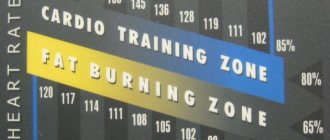No smart words or abstruse advice from nutritionists who only work for them. In this post, the editors of Bow&Tie will talk about how to get rid of fat for you personally. Our nutritional advice and training regimens will help 99% of the time for any person who does not have hormonal disorders. They helped us. And absolutely everyone who tried them, too.
Image source: bowandtie.ru
Fat breakdown is a chemical reaction, and Bow&Tie will tell you how to start it.
Nutrition rules - following them, you will lose weight
Nothing in the human body comes from nowhere and nothing goes to nowhere. Image source: bowandtie.ru
The less often a person eats, the more the body does to reduce energy loss. In addition to the lack of effect (weight loss), a person experiences weakness and gets tired quickly. The solution to a slow metabolism is to eat fewer calories, but eat more often. We divide the daily calorie requirement into 5-7 meals during the day. In this case, the body will not respond to a decrease in caloric intake, since it will understand that it is not in danger of prolonged fasting.
The following nutritional algorithms will help you.
Are there any rules for doing cardio on an empty stomach?
Experts say that there are only a few rules for fasted cardio, but they are definitely worth sticking to. Among them the following laws can be noted:
- One workout should not last more than 30 minutes.
- There is no need to try hard to eat less, because during the day a person simply needs to eat a sufficient amount of food, which will necessarily contain proteins, fats, and carbohydrates. What will happen otherwise? The body will begin to use muscles for additional energy, so their volume can rapidly decrease if you are hungry or undernourished.
- Strength training does not need to be excluded if a person resorts to the method of cardio training on an empty stomach.
Well, another question is often asked: should I eat after cardio training? The answer from experts is clear: this must be done. Of course, you can reduce the number of calories consumed per day to the acceptable lower limits if a person is engaged in intense training, but in no case should you starve after such training until lunch, as you can often hear about this.
Fractional meals
The principle of fractional nutrition is maintaining a balance of proteins, fats, carbohydrates, vitamins and minerals while reducing daily caloric intake. To do this, food is divided into 5-7 meals.
Let's give an example of a nutrition schedule and products that were personally tested in practice and gave a positive result at the rate of 1,500-2,000 kcal per day:
Carbohydrates:
- rice, buckwheat, oatmeal and pearl barley, etc. – 100-250 grams (start the day with the largest portion and eat everything before 15:00, otherwise the body will not have time to spend it).
Proteins:
- boiled chicken breast – 400-500 grams (save for at least one evening meal);
- boiled eggs – 3-5 pieces (also leave 1-2 for the evening);
- low-fat cottage cheese – 200 grams (eat at the last meal);
- low-fat kefir - 1 glass (also at the last meal).
Fiber is vegetables, you can eat them within reason (but at the last meal - only cottage cheese and kefir). Fats – we suggest betting on fish oil capsules (Omega-3). Drink at least 3 liters of regular, still water per day.
Cyclical no-carbohydrate diet
A low-carbohydrate diet is considered effective, but is not suitable for everyone. Image source: bowandtie.ru
The essence of the diet is eating in cycles. We exclude carbohydrates from the diet for 2-5 days, and then eat only carbohydrates for 1-2 days (so that the body does not switch to a slow metabolism).
Be sure to weigh yourself every day and record your results to determine when the weight will stop coming off. This is important: most often the metabolism slows down for 3-4 days, but this is not true for every organism.
We suggest starting with the system: 3 days - no carbohydrates, 1 day - only carbohydrates. Next, if you feel good and the weight is coming off, increase the number of days without carbohydrates. If you feel bad, reduce the number of days without carbohydrates and increase the number of carbohydrate days.
Days without carbohydrates:
- boiled chicken breast or fish – 500-600 grams;
- boiled eggs - 10 pieces;
- low-fat cottage cheese – 300 grams;
- vegetables – 400-500 grams.
Carbohydrate days:
- rice, buckwheat, oatmeal and pearl barley, etc. – 100-250 grams;
- Protein and fiber – within reasonable limits (i.e. don’t overeat).
This diet is considered the most effective, but is not suitable for everyone. If you do not have time to restore strength during carbohydrate days, you feel lethargic and powerless, add chocolate or honey to your cereal. If this doesn't help, this diet is not for you.
The principle of operation and rules of cardio training
Cardio or aerobic training is a set of exercises that increases your heart rate and speeds up your metabolism. In this case, the body begins to consume a large amount of energy, which it receives due to the active oxidation of fats under the influence of oxygen.
However, if the exercises are performed incorrectly and the load is irrationally selected, the effect of the exercises will be insignificant, so when choosing cardio training as a tool for fat burning, it is important to remember that they will be effective only if certain conditions are met.
These include:
- Regularity – training should be regular (preferably daily), and the load should increase gradually.
- Duration - the process of fat breakdown is activated no earlier than 20 minutes after the start of the exercise, and if you perform the exercises for more than an hour, the body begins to expend muscle energy. Therefore, the optimal interval for cardio exercise is considered to be from 30 to 60 minutes.
- Heart rate - during cardio workouts for fat burning, you must monitor your heart rate. Recommended contractions of the heart muscle are in the range from 65–85% of the maximum frequency. Indicators exceeding these standards have a negative impact on heart function, and if the pace of training is not high enough, the amount of calories burned will be insufficient to achieve a visible result.
- Nutrition - the regime and diet depends on the degree of load and type of training, but regardless of the intensity of the training, it should be fractional, balanced and contain the optimal amount of proteins and carbohydrates.
- Time – the most intense metabolism in the body is observed in the first half of the day, so morning workouts are considered the most effective.
Tip: nutritionists do not recommend doing morning workouts on an empty stomach. Despite their effectiveness, such activities stimulate the production of bile and negatively affect blood sugar levels.
If you don’t have money for proper nutrition and diets
The above diets cannot be classified as budget ones. Another option is to distribute your own standard daily meals into 6-7 meals a day. A week after weighing, determine the results.
If you gain weight or remain at the same level, reduce carbohydrates by calculating your nutrition using any calorie table. If you have lost more than 1.5 kg, add carbohydrates or, for example, eat a chocolate bar a day. If you have lost 1-1.5 kg, everything is great.
Cardio training for weight loss at home and outdoors
Cardio workouts are divided into high-intensity and low-intensity. Image source: bowandtie.ru
Cardio training includes walking, jogging, swimming, cycling, exercise on an exercise bike, jumping rope, etc. There are two sources of energy in the muscles:
- Glycogen is the carbohydrates that are burned first. It lasts on average 40 minutes.
- Fat is not subcutaneous, but muscle fat. It is spent either when glycogen is released, or when slow muscle fibers are involved. It also lasts for 40 minutes on average.
During such cardio exercises the following happens:
- fat “burns” (first glycogen, then fats from the muscles, and when they come out, subcutaneous fat is “wasted”);
- blood circulation increases;
- the cardiovascular system is strengthened.
The overall endurance of the body also increases.
Cardio training outdoors
Cardio workouts are divided into high-intensity (very fast running, fast cycling) and low-intensity (fast walking). The more intense the load, the more carbohydrates are burned and the less fat is burned. With low intensity (when slow muscle fibers are involved), on the contrary, fat immediately “burns”.
Does this mean that brisk walking is more effective than running in burning fat? On the one hand, yes. But on the other hand, the more intense the load, the more energy (calories) will be spent during recovery. That's why:
- High-intensity cardio training will help you quickly “burn” fat, but with additional stress.
- low-intensity cardio workouts will also help “burn” fat, but more slowly.
Therefore, if time is not critical, or if you do strength training, you can avoid exposing yourself to additional stress and preserve muscle (more on this below).
Cardio training at home
We perform cardio training at home with an open window and in a well-ventilated room (so that the body is saturated with oxygen, and oxygen oxidizes fat in the body). The following exercises are suitable:
- riding an exercise bike;
- jumping rope;
- rotation of the hoop;
- slow running in place;
- gymnastics.
You need to do cardio training at home for at least 40-50 minutes without a break, in a ventilated area, while monitoring your pulse (more on this below).
EASY CARDIO WORKOUT AT HOME (FIRST ROUND)
Light cardio at home can be done without additional equipment. All you need is free time and a little space in your apartment. Before class, you can perform joint gymnastics. This is useful not only for warming up before exercise, but also for improving joint function.
Timed cardio workout
To perform a timed workout, you will need a timer.
- For the very newbies. Exercise scheme: 30 seconds of work, 30 seconds of rest. First comes the first round: perform 7 exercises in sequence. Then comes the second round: also perform 7 exercises in sequence. Rest 2 minutes between rounds. The total training time will be 15 minutes.
- For beginner and intermediate levels. Exercise scheme: 30 seconds of work, 15 seconds of rest. First comes the first round: perform 7 exercises in sequence, repeat them in two circles. Then comes the second round: perform 7 exercises in sequence, also repeat them in two circles. Rest 1-2 minutes between circles. The total training time will be 20-25 minutes.
- For intermediate and advanced levels. Exercise scheme: 45 seconds of work, 15 seconds of rest. First comes the first round: perform 7 exercises in sequence, repeat them in two circles. Then comes the second round: perform 7 exercises in sequence, also repeat them in two circles. Rest 1 minute between circles. The total training time will be 30 minutes.
Cardio workout by reps
Without a timer, you can train according to the number of repetitions indicated in the exercise description. Adjust the exact number of repetitions yourself depending on your fitness level. Remember that in any cardio workout, the difficulty depends primarily on the speed of the exercise. The higher the pace you keep, the more intense the workout.
First round:
- Knee raises with arm raises: 20-25 arm raises.
- Bent-over arm swings: 10-15 tilts on each side.
- Knee to stomach pull-ups (right side): 10-20 knee raises.
- Knee to stomach pull-ups (left side): 10-20 knee raises.
- Boxing (right side): 15-20 punches on each hand.
- Boxing (left side): 15-20 punches on each hand.
- Bent-over leg abduction: 10-15 tilts on each side.
KNEE RAISES WITH ARM EXTENSIONS
How to do it: The essence of the exercise is to march simultaneously, as well as raising your arms to the sides. Try to pull your knee until your thigh is parallel to the floor. When moving your upper limbs, do not lower your elbows, trying to move them back.
Benefits of the exercise: This element of cardio training for older people is great for simultaneously working out the legs and arms. Also, by raising the knees, the abdominal muscles are strengthened. Exercise gently accelerates your heart rate, bringing you into a productive working state.
How much to do: 20-25 arm raises.
SWING YOUR ARMS IN A TILT
How to do it: Initially, take a stance with your feet wider than your shoulders. After this, bend your body 90 degrees forward and spread your arms to the sides. Next, at a slow pace, rotate your torso until your left hand touches the floor. Do the same in the other direction and start a new repetition without straightening up to your full height.
Benefits of the exercise: This is an amazing health exercise for the muscles that support the spine, as well as for the lumbar region. The exercise has a strengthening effect on the lower abdominal muscles, as well as the muscles of the back.
How much to do: 10-15 bends on each side.
PULLING THE KNEE TO THE ABDOMEN
How to do it: Shift your body weight onto one leg and move your free leg back slightly. Bring your hands together in front of you and place one palm on top of the other. Next, begin to raise the knee of your free leg to waist level, while lowering your arms. At the peak point, touch your knee to your palms.
Benefits of the exercise: This exercise from a workout for beginners perfectly warms up the lumbar region, helps strengthen the quadriceps, as well as the lower abdominal muscles. An effective exercise is indispensable for fat-burning training.
How much to do: 10-20 knee raises. Don't forget to repeat on the other side.
BOXING
How to do it: Step forward to spread your legs lengthwise. The situation should be as stable as possible. Turn your body slightly forward. After this, perform alternating forward strikes, as if practicing a technique on a punching bag. Tighten your abs while hitting. You should not just hit with your hands, but work with your entire muscle corset.
Benefits of the exercise: Basically, the exercise is aimed at strengthening the muscles of the upper extremities. With its help, the respiratory system is trained and physical endurance parameters are increased.
How much to perform: 15-20 strokes on each hand. Don't forget to repeat on the other side.
LEG ABLEDUCTION WITH TILT
How to do it: To begin, extend your arms above your head and place your feet in line with your shoulders. After taking the starting position, lower your elbows to the level of your lower chest, and move your leg to the side to a small height. Tilt your body slightly towards the raised leg. After a short pause, return to the starting phase and repeat the movement with the other leg.
Benefits of the exercise: Exercise helps get rid of the sides, strengthens the lateral side of the thigh, warms up the muscles of the back and lower back, which is especially useful for people with a sedentary lifestyle. Also, the muscles and joints of the shoulders, which weaken with age, are subject to useful load.
How much to do: 10-15 bends on each side.
How to combine cardio and strength training for weight loss - options for beginners and amateurs
Strength training and cardio can and should be combined
We suggest considering two options for combining cardio + strength. Option number 1 – for those who have time to train:
- Step 1 – 40-50 minutes of low-intensity cardio training (muscle fat goes away).
- Step 2 – 20-50 minutes of strength training to trigger lipolysis with the help of stress and anabolic hormones.
- Step 3 – 1 hour of rest (to allow blood flow to deliver fat to muscles).
- Step 4 – repeat steps 1 and 2.
Option number 2 – for people who don’t have time:
- Step 1 – 40-50 minutes of low-intensity cardio in the morning. For example, walking at a brisk pace on an empty stomach (muscle fat goes away + in the morning there is not so much “own” fat in the muscles).
- Step 2 – 40-50 minutes of low-intensity cardio training before strength training (muscle fat goes away).
- Step 3 – 20-50 minutes of strength training to trigger lipolysis with the help of stress and anabolic hormones.
- Step 4 – 40-50 minutes of low-intensity cardio after strength training (for example, a brisk walk home).
You can add low-intensity cardio training whenever possible.
Cardio in the morning on an empty stomach burns more fat: truth or myth?
When it comes to cardio, you will hear advice from even the most famous athletes: cardio should be done in the morning, on an empty stomach. How is this explained? Why in the morning? Why not during the day or in the evening?
The fact is that in the morning, on an empty stomach, we have a low level of glucose in the blood, since we ate at least 8 hours ago, by this time all the food has already been digested and absorbed by the body. Glucose (or sugar) is an immediate source of energy that enters our body through food. Since we are hungry, our glucose level is quite low.
In other words, on an empty stomach there is no free energy in our body, except that which can be used from fat depots. Fat depots are another source of energy; all unclaimed energy received from food is stored on our body for further consumption.
By this logic, we can assume that morning cardio promotes better fat burning than, for example, cardio in the evening, because our body is forced to more actively use up fat reserves, because apart from them there is no other energy in our body.
How does everything really happen?
According to some studies, cardio in the morning on an empty stomach actually burns slightly more fat reserves than cardio on a full stomach. But in addition to fat deposits, muscles also disappear. The loss in muscle mass is small, but it is there.
And one could conclude that it is indeed better to do cardio on an empty stomach because it brings greater results in terms of fat loss, but let's look at it from another angle.
For example, your daily metabolism is 2000 calories. You're in the weight loss phase and you're only eating 1,500 calories, creating a 500-calorie deficit. All of your physical activity, including morning cardio, counts toward those 2,000 calories. Will doing cardio in the morning burn more calories than doing cardio only in the evening? Hardly ..
No matter when you do cardio: on an empty stomach or on a full stomach, you will burn the same number of calories. And despite the fact that in the morning more energy will come from fat reserves, in the future this will not increase or speed up energy consumption during the day. In fact, your metabolism will remain around the same 2000 calories.
An indicator of our effectiveness in losing weight is the calories burned. Measure: how many calories will you burn on the treadmill in the morning and in the evening? I am sure that with the same intensity and duration, the numbers will be the same.
Yes, you will get more energy from fat stores in the morning, but would your body still turn to them during the day for energy deficiency inflammation? So what difference does it make to you: he does it in the morning or in the evening?
In fact, you should not care where the body now gets energy from: from glucose, glycogen, fat or muscles (the latter, of course, is extremely undesirable). He does not coordinate this with us and does not report to us. So why should we bother with this if in the end it all comes down to a banal calorie deficit?
Why do you still need to do cardio in the morning?
Despite everything, cardio in the morning has several important advantages:
- It's easier to do cardio on an empty stomach than on a full stomach.
- Cardio in the morning reduces hunger in the morning, so it's easier for us to create a calorie deficit
- You have more energy in the morning than in the evening
- Finding time for cardio in the morning is again easier than in the evening after work.
If you still decide to do cardio in the morning (which is nothing bad), then remember that you will lose some muscle along with the fat. In order to avoid this, pay attention to protein; if you don’t get enough of it, then the risk of saying goodbye to muscle mass is quite high, not only with morning cardio, but in general on a diet.
Cardio in the morning on an empty stomach is not recommended for people with diabetes or pre-diabetes.
I personally still like to do cardio in the evening, after strength training. Doing cardio in the morning is a whole challenge for me, although some people find it convenient to do it this way.
Do cardio when it's convenient for you: morning, afternoon or evening. Our body is a very smart and self-regulating system that adapts perfectly to external circumstances. Unfortunately, such tricks as “I’ll do cardio in the morning and burn more calories” don’t work against her.
Update : In the spring of 2021, an interesting study was released proving the effectiveness of morning cardio on an empty stomach.










